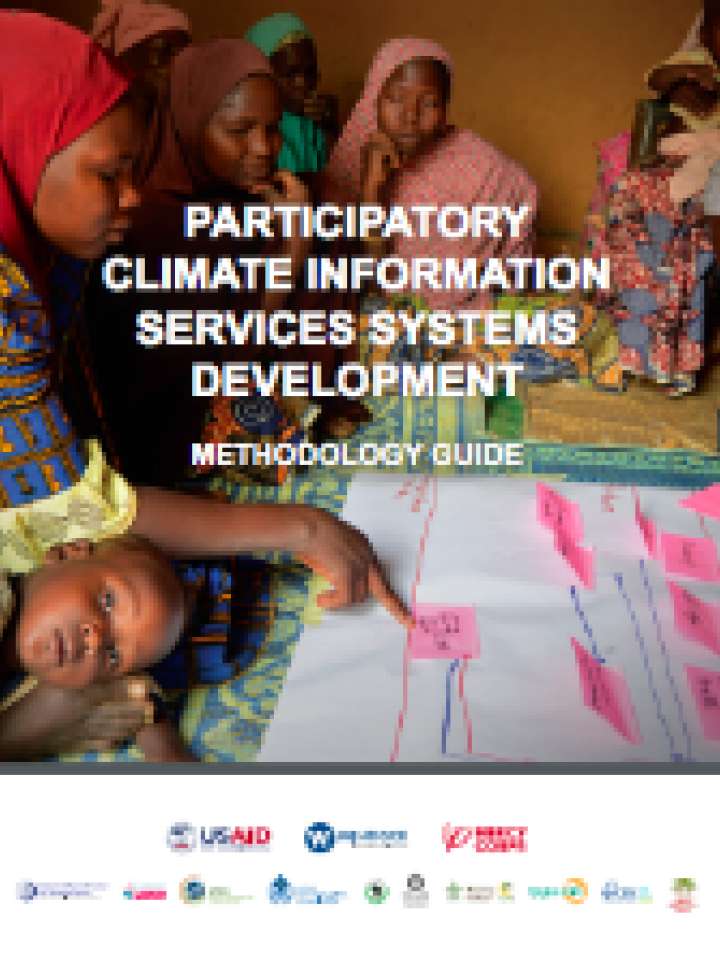Participatory climate information services systems development: methodology guide
Climate information services (CIS) systems can play a critical role in providing farmers the information necessary to improve their productivity, reduce their risks, or enhance their resilience to climate shocks and stresses. Unfortunately, many CIS strategies fail to create feedback mechanisms or take participatory approaches that include farmers' perspectives. This can lead to the development and provision of CIS that are inappropriately contextualized, inaccessible or not useful for farmers.
The Participatory Climate Information Services Systems Development Methodology takes a holistic view to improving the overall effectiveness of a CIS system. It uses a participatory systems mapping approach that brings together key CIS stakeholders from across the value chain, creates space for empowerment and more robust feedback from farmers, and facilitates consensus-building for action.
This step-by-step guide is addressed to practitioners who are involved in designing, planning, and implementing activities to improve the quality and inclusive delivery of CIS. The guide takes practitioners through a five-stage methodology to assess the factors that affect the functioning and efficiency of CIS programs, such as social and cultural norms, institutional arrangements, and information flows. It also supports practitioners to facilitate dialogue between stakeholders within the CIS communication chain, encouraging them to take action together to improve the system.
The guide supports practitioners and CIS stakeholders in answering the following questions:
- What are the factors that influence end users’ access to and use of CIS?
- Where are the breakdowns and constraints in the delivery, access and use of CIS?
- What are the most effective approaches and channels for improving end users’ access to and use of climate information?
- What opportunities exist for CIS stakeholders along the communication chain to improve the functioning of the system to better meet users’ needs?
Explore further
